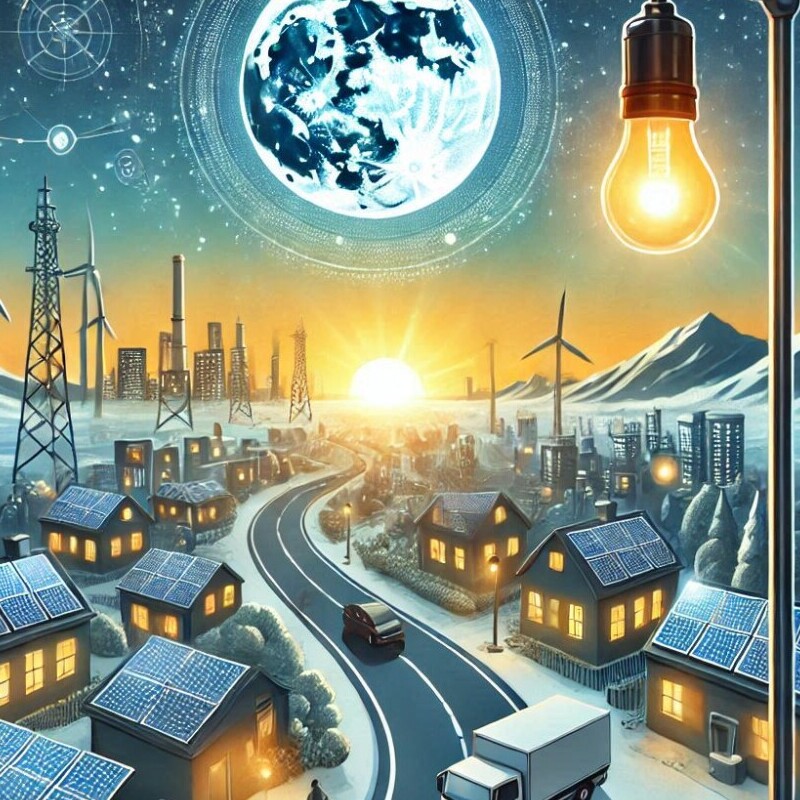About Streetlights
Complaints About Streetlights
Common Complaints About Streetlights and How to Address Them

Streetlights are vital for public safety, urban functionality, and community aesthetics. However, they can also become sources of complaints and challenges. Below are answers to the common concerns:
What Concerns Are Related to LED Streetlights?
LED streetlights, while energy-efficient and long-lasting, can raise the following concerns:
- Glare and Intensity: LEDs often emit bright, bluish light that may cause discomfort or glare, impacting nighttime visibility and potentially disrupting circadian rhythms.
Solution: Use LEDs with a warmer color temperature (around 2700K-3000K) and incorporate shielding to reduce glare. Adaptive lighting systems can adjust brightness based on the time of night. - Light Pollution: LED installations can contribute to light pollution, affecting nearby residents and wildlife.
Solution: Employ full-cutoff fixtures that direct light downward and minimize horizontal light spillage. - Maintenance Costs and Compatibility: While LEDs are low-maintenance, retrofitting old systems can be costly, and compatibility issues may arise.
Solution: Conduct thorough feasibility studies and opt for phased retrofitting programs.
How Do You Write a Letter About a Streetlight Problem?
When drafting a letter to report a streetlight problem:
- Start with Politeness: Address the responsible department or authority formally.
- Provide Specific Details: Mention the exact location (e.g., street address or pole number) and describe the issue clearly (e.g., “flickering light” or “not working”).
- Explain the Impact: Highlight how the problem affects safety or convenience.
- Request Action: Politely ask for a resolution and provide your contact details for follow-up.
- Example: Dear [Authority Name],
I am writing to report a malfunctioning streetlight located at [location]. The light has been [problem, e.g., flickering or out] for [duration], creating safety concerns for pedestrians and drivers. I kindly request your attention to this matter at your earliest convenience.
Thank you for your assistance.
Sincerely,
[Your Name]
Who Is Responsible for Local Streetlights?
Responsibility for streetlights typically falls to:
- Municipal Governments: Most local governments oversee streetlight maintenance and repair.
- Utility Companies: In some regions, utility companies manage installation and upkeep.
- Homeowners’ Associations (HOAs): For private communities, HOAs may be responsible.
Tip: Check your local municipal or utility provider’s website to determine who manages streetlights in your area.
What Are the Cons of Streetlights?
While streetlights offer many benefits, their drawbacks include:
- Energy Consumption: Although modern LED systems reduce energy usage, traditional systems can be inefficient.
Solution: Upgrade to energy-efficient LEDs and explore solar-powered options. - Light Pollution: Excessive brightness can obscure night skies and disturb ecosystems.
Solution: Use smart lighting systems to adjust brightness levels dynamically. - Initial Costs: Installing new systems or retrofitting old ones can be expensive.
Solution: Seek grants or funding for sustainable urban development projects. - Maintenance Challenges: Frequent repairs and outages can frustrate communities.
What Is the Most Common Problem Relating to Streetlight Maintenance?
The most frequent issues include:
- Bulb Outages: This can happen due to wear and tear or power supply issues.
- Faulty Wiring: Aging infrastructure can lead to inconsistent power.
- Pole Damage: Accidents or weather conditions can physically damage poles.
- Control Failures: Photocells or timers can malfunction, causing lights to stay on or off at inappropriate times.
Solution: Implement regular inspection schedules, use durable materials, and adopt smart technology to monitor performance remotely.
The Various Types of Streetlights Installed
- Traditional High-Pressure Sodium (HPS): Known for their yellow-orange glow, they are energy-intensive and less environmentally friendly.
- LED Streetlights: Provide bright, efficient, and long-lasting light with lower energy consumption.
- Solar-Powered Lights: Sustainable but reliant on adequate sunlight and battery storage.
- Smart Streetlights: Equipped with sensors and IoT connectivity, allowing for real-time monitoring and adaptive lighting.
Recommendation: For modern cities, a mix of LED and solar-powered systems, supplemented by smart controls, ensures efficiency and adaptability.
By addressing these concerns proactively, municipalities and communities can improve streetlighting systems for all stakeholders.
%20(2).png)
















Comments